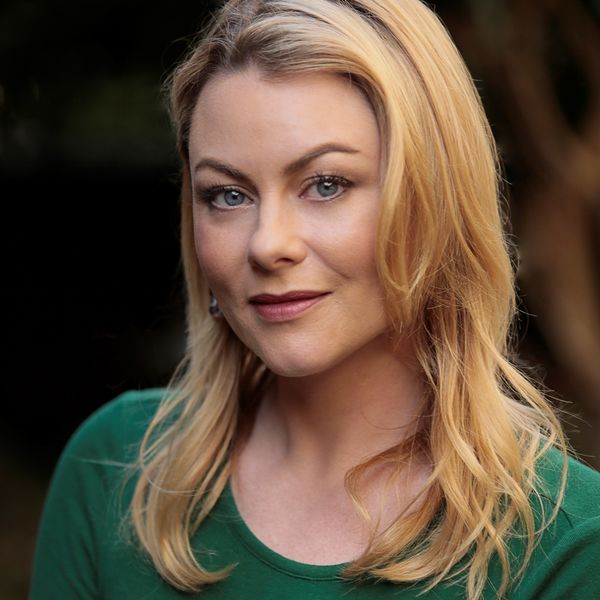
Has the social stigma of assisted reproduction been beaten?
One of the world’s first ‘IVFlings’ (people conceived via IVF), Rebecca Featherstone, shares her insight into how far we’ve come in destigmatising assisted reproduction and infertility in Australia.
The story of how I came into this world was definitely a unique one at the time.
Stories of IVF and assisted reproduction seem to be everywhere in the media these days, but the science of IVF is quite literally as young as I am.
I was born in January 1983. I was also amongst the first generation of IVF babies to be born in the world.
My mum, who was from the UK, and my dad, an Australian, met and fell in love in England, knowing they both wanted a large family. Unfortunately, after my older sister was born, my mum used a copper IUD as a form of birth control which due to complications meant she would no longer be able to conceive naturally.
They were absolutely devastated by this news, especially since they were only 28 or 29 at the time. Desperate to have more children, they started to go down the route of adoption when my dad came across a news article sharing how IVF pioneers were starting a new clinic called Bourn Hall in Cambridge.
They figured, why not try it out as they were desperate to complete their family and were not too far from Bourn Hall. At that time, they were told IVF would give them about a 5% chance of successful pregnancy. After completing the IVF cycle, which meant living at the Bourn Hall, my parents then had to wait for the news if they were pregnant or not.
Two phone calls came through two weeks later that changed their lives. Expecting a call with their results from IVF, my dad picked up the phone only to be told by an adoption agency that they had found a little boy for them to adopt. Only an hour or so later, the phone rang again, this time with the news that the IVF cycle was successful, and my mother was pregnant with me.
There you have it. Three Featherstone siblings, who all came into the family in their own unique way.
My older sister, conceived naturally. My brother, by adoption. And me, thanks to IVF. My brother and I are only 10 months apart!

Photo of Rebecca's mother in front of Bourn Hall
Growing up as one of the first IVF babies in Australia
Our family moved back to Australia when I was two years old. But it wasn’t until I was 12 years old that my parents shared with me my story of conception.
And to be honest… at first, I felt a little bit like a science experiment. It was such a rare story of conception at that time, that it wasn’t well known by peers in the classroom. In fact, there were only a select few friends I told.
I even had a classmate in such disbelief, that I bought in an old letter from Professor Edwards at Bourn Hall, proving my conception!
As I grew older, I became more and more interested in the incredible science of fertility, and at the same time started to recognise the seeming lack of knowledge within my peer groups about their own fertility health.
I was shocked as an adult when incredibly smart, successful colleagues or friends would say things like, “I didn’t know older women can’t have children” or “well, it can’t be an issue on the man’s side”.
So many people will experience infertility, as many as one in 6 Australian couples, and numerous people I’ve talked to say that if they had been taught about fertility at school (and not just about contraception) they would have known where to go for help or thought about receiving help earlier.
That’s why, alongside Candice Thum (nee Reed), the first IVF baby born in Australia, we started an awareness organisation called ‘Fertility Matters’ - an education initiative teaching young adults in Australia about their own fertility health. The aim is for everyone to be able to talk openly about fertility and feel empowered by their decisions.

Then and Now
Now that I have my own children, it’s incredible to see the change in the way assisted reproduction is talked about, and accepted, in their day to day lives and classrooms.
Much has changed since I was first conceived via IVF, not only in the industry itself but also in the ways that society discusses these topics. There is a higher sense of normalcy around assisted reproductive treatments, especially considering that about 1 in 20 children are born through IVF - the equivalent of at least one or two children in every classroom. And these figures don’t take into account the many other ways the fertility industry helps Australians achieve their dreams of parenthood – for example through comprehensive donor programs, or simple fertility treatments like ovulation induction.
My kids know all about my story of IVF as well as the many ways people can create their families. It’s so important for children and young adults to be made aware of this diversity, and although it is definitely being talked about more, there is still a long way to go.
Even though my own children were conceived naturally, they wouldn’t be here unless I was. And the reason I’m here is because of the technology and science of IVF. This knock on effect is such a beautiful thing…and one we should celebrate.
Sources:
1 https://newsroom.unsw.edu.au/news/health/almost-one-20-babies-australia-born-through-ivf
